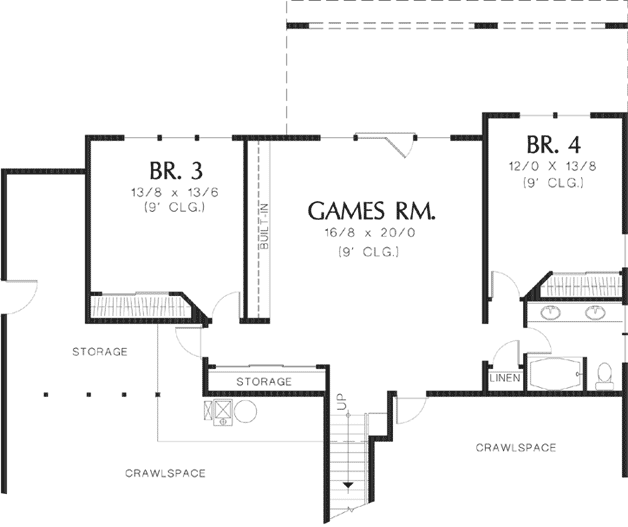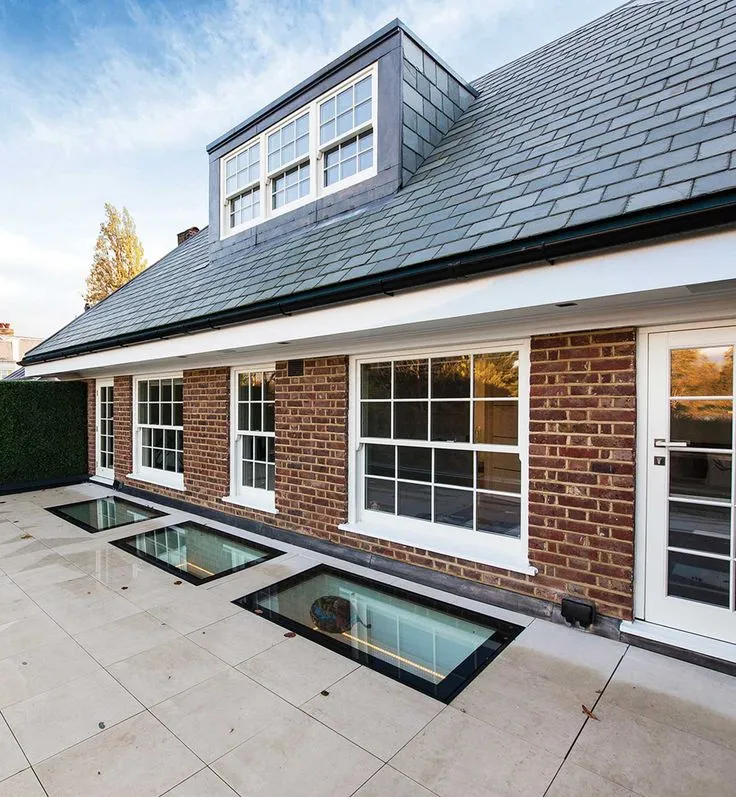Radiate Your Basement with Natural Light
Are you considering building a new home or expanding your existing one? One essential feature that can transform your living space is a daylight basement. This unique architectural concept brings natural light into your basement, creating a bright and inviting atmosphere. In this blog post, we will explore what a daylight basement is, its advantages, and how you can make the most of this radiant space. So, let’s dive in and illuminate your understanding of daylight basements!
Know about Daylight Basement
It is also known as a walkout basement, is a type of foundation design that allows for natural light to enter the lower level of a house. Unlike traditional basements that are entirely below ground level, daylight basements are built into sloping terrains, taking advantage of the natural topography of the land. By incorporating large outdoors and often a patio or deck area, these basements become an extension of the living space, blurring the line between indoors and outdoors.

Perks of a Daylight Basement
Abundant natural light: The most apparent advantage of a daylight basement is the influx of natural light. Sunlight streaming through the outdoors creates a warm and welcoming environment, making the basement feel more like a part of the main living area. The illumination provided by natural light enhances the aesthetics and livability of the space.
Expanded living area
A daylight basement can significantly increase the usable square footage of your home. By utilizing this space effectively, you can create additional bedrooms, a home office, a recreational area, or even a guest suite. The possibilities are endless, allowing you to tailor the basement to meet your specific needs.
Enhanced resale value
Daylight basements are highly sought after by homebuyers due to their versatility and appeal. The added functionality and natural light make these basements a valuable asset, potentially increasing the resale value of your home.

Your Dream Basement Projects starts from here : Ignite your options with our complementary quotation
How to Design a Daylight Basement?

Deck and patio integration
Incorporating a deck or patio into your daylight basement design expands the living space and provides a seamless transition between indoor and outdoor areas. You can create a cozy outdoor seating area, a barbecue space, or a garden oasis, all easily accessible from the basement.

Outdoors and outdoor wells
Strategically placed outdoors and outdoor wells are essential in daylight basements to maximize natural light penetration. Consider installing large outdoors that allow for unobstructed views and ensure proper outdoor placement to optimize sunlight exposure throughout the day

Open floor plan
An open floor plan is ideal for daylight basements as it promotes a sense of spaciousness and flow. By eliminating unnecessary walls and barriers, you can create a versatile and flexible space that can be easily customized to suit your needs.
Daylight basement vs. walkout basement: Is there a difference?
The terms “daylight basement” and “walkout basement” are often used interchangeably, but there is a subtle distinction between the two. While both types allow for natural light in the basement, a walkout basement has a separate exterior door or access point that leads directly to the outside, typically at ground level. This feature provides additional convenience and versatility, making walkout basements desirable for homeowners who plan to use the space for outdoor activities or gardening.
Incorporating daylighting techniques
Daylighting refers to the deliberate use of natural light to illuminate indoor spaces. When designing your daylight basement, there are several techniques you can employ to maximize the benefits of daylight:

Light wells and skylights
Installing light wells or skylights in strategic locations can bring additional natural light into the basement. Light wells are vertical openings in the ground that channel light from above, while skylights allow direct sunlight to enter through the roof. These features can brighten up even the deepest corners of your basement.
Light-colored finishes
Opt for light-colored walls, ceilings, and flooring materials in your daylight basement. Lighter shades reflect more light, making the space feel brighter and more open. Consider using light-colored paint, tiles, and finishes to enhance the overall luminosity.


Light shelves and reflective surfaces
Light shelves are horizontal surfaces installed above outdoors that bounce natural light further into the room. They help distribute sunlight deeper into the space and minimize glare. Additionally, incorporating reflective surfaces such as mirrors or glossy finishes can amplify the effects of natural light by bouncing it around the room.
Basement Finishing Cost Calculator
Daylight basement vs. walkout basement: Which is right for you?
When deciding between a daylight basement and a walkout basement, there are a few factors to consider:
Lot and topography
If your property has a significant slope or is situated on uneven terrain, a daylight basement can take advantage of the natural slope and allow for optimal light entry. On the other hand, if your lot is relatively flat and has direct access to the outside, a walkout basement may be more suitable.
Desired functionality
Think about how you plan to use your basement space. If you envision easy access to outdoor areas, gardening, or outdoor entertainment, a walkout basement’s direct exterior access might be preferable. However, if your focus is on maximizing natural light and expanding your indoor living space, a daylight basement can provide ample illumination and versatility.
Aesthetic preferences
Consider your personal preferences and architectural style. Daylight basements often feature larger outdoors and patio or deck areas, allowing for seamless indoor-outdoor integration. Walkout basements may have a separate entrance at ground level, providing a distinct visual appeal.
How to embrace natural light in a basement?
Even if you don’t have the option for a daylight or walkout basement, there are still ways to introduce natural light into your lower level:

Outdoor wells and egress outdoors
If your basement is outdoors, ensure they are clear of obstructions and allow natural light to filter through. Consider installing outdoor wells, which can increase the amount of light entering the space. Egress outdoors, designed for emergency exits, can also serve as sources of natural light.
Light paint colors and finishes
As mentioned earlier, choosing light paint colors and finishes can make a significant difference in brightening up your basement. Opt for light hues that reflect natural light and create an airy ambiance.
Artificial lighting
Supplement the natural light in your basement with well-designed artificial lighting. Utilize a combination of ambient, task, and accent lighting to create a layered and inviting atmosphere. Consider using daylight-spectrum bulbs that mimic natural light to provide a similar effect.
Can a daylight basement be added to an existing home?
Yes, it is possible to add a daylight basement to an existing home. However, it requires careful planning and construction. The feasibility will depend on the layout of your home, the slope of the land, and local building regulations. Consulting with a professional architect or contractor will help determine if adding a daylight basement is a viable option for your specific circumstances.
Are daylight basements only suitable for houses built on sloping lots?
While daylight basements are commonly associated with houses on sloping lots, they can also be implemented in properties with relatively flat land. In such cases, excavation and landscaping techniques can be employed to create the necessary slope for the basement. It’s important to work with experienced professionals who can assess the feasibility and design the best solution for your property with an affordable budget.
Final Note!
In conclusion, a daylight basement offers numerous benefits, including an influx of natural light, expanded living space, and enhanced resale value. By incorporating design elements such as large outdoors, patio integration, and open floor plans, you can create a radiant and versatile space. Whether you have a sloping lot or need to convert an existing basement, careful consideration of insulation, energy efficiency, and waterproofing is essential. So contact us now to transform your home, making it more inviting, functional, and aesthetically pleasing.
Embark on a journey of endless options to transform your basement into your dream space now
FAQ
Can a daylight basement be used for rental purposes?
Yes, daylight basements can be an attractive option for rental purposes. With the additional space and natural light, a well-designed daylight basement can serve as a separate living unit or an income-generating rental apartment. However, it’s essential to comply with local regulations and obtain any necessary permits for rental units in your area.


